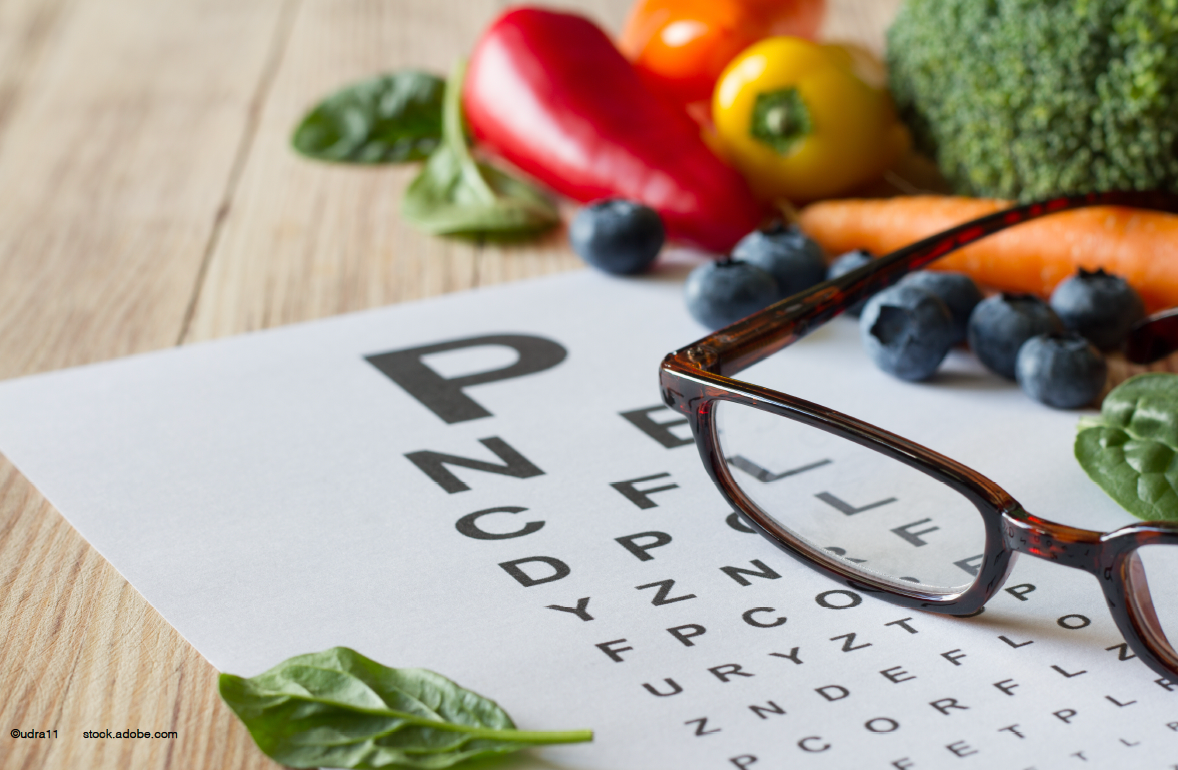Cohort study: Considering if dietary nitrate intake is associated with progression of AMD
Further research is needed before dietary nitrate intake can be recommended as a therapy for age-related macular degeneration, according to the study authors.

The findings of a recent cohort study suggest that dietary nitrate intake may be associated with lower risk of age-related macular degeneration (AMD),1 according to Geoffrey K. Broadhead, MD, PhD, and colleagues. However, the caveat is that the association between the 2 disappeared after adjusting for Mediterranean dietary patterns.
At this time, dietary intake of nitrate cannot be considered a therapy for AMD, Dr. Broadhead said. He is from the Division of Epidemiology and Clinical Applications, National Eye Institute, National Institutes of Health, Bethesda, MD, and the Save Sight Institute, The University of Sydney, Sydney, Australia.
The rationale behind the study under discussion were previous reports in the literature.
One study reported “an association between narrower retinal microvasculature caliber and lower dietary nitrate intake, suggesting a possible mechanism by which nitrate intake influences retinal vasculature and AMD development.”2
Another study found that increased dietary intake of nitrates may be associated with reduced risks of early AMD3; however, this result has not been replicated in other studies of patients with late AMD.
The researchers analyzed data from the prospective Age-Related Eye Disease Study (AREDS) and AREDS2 randomized clinical trial cohorts and their extended follow-up studies. All participants had “non–late” AMD in at least 1 eye. Data were analyzed from March 1, 2020, to September 30, 2022.
The main outcome measure of the cohort study was the identification of an association between dietary nitrate intake and development of late AMD, or neovascular AMD, or geographic atrophy (GA) or large drusen. The interactions of dietary patterns, with common at-risk single-nucleotide polymorphisms, also were assessed, the authors explained.
Combined and separate cohort results
A total of 7,788 participants (4396 women, 3392 men; 13,511 eyes; mean age, 71.1 years) were included (4,288 from the AREDS and 3,610 from the AREDS2; of these, 110 had been both studies.
Dietary nitrate intake was associated with a decreased risk of progression to late AMD in the combined AREDS/AREDS2 cohort (hazard ratio [HR], 0.77; 95% confidence interval [CI], 0.69-0.86 for quartile 4 vs quartile 1 of intake) and a decreased risk of GA (HR, 0.71; 95% CI, 0.61-0.83) and neovascular AMD (HR, 0.85; 95% CI, 0.73-0.99), the results showed.
However, that was not the case when the 2 cohorts were analyzed separately.
“In the AREDS, increased nitrate intake (quartile 4 vs quartile 1) was associated with a decreased risk of late AMD (HR, 0.77; 95% CI, 0.65-0.91) and GA (HR, 0.80; 95% CI, 0.65-0.97) but not neovascular AMD; in AREDS2, there was no association between nitrate intake (quartile 4 vs quartile 1) and late AMD (HR, 0.90; 95% CI, 0.80-1.02) or neovascular AMD (HR, 0.93; 95% CI, 0.78-1.11),” the investigators reported. There was a correlation between Mediterranean dietary patterns and dietary nitrate intake (r = 0.52, P < 0.001).
The authors concluded that the results were subject to potential bias and could not support new clinical recommendations to prevent AMD.
"The previously described associations between dietary nitrate intake and AMD may in fact represent overall dietary patterns. Further research is needed before dietary nitrate intake can be recommended as a therapy for AMD,” they said.
References
Broadhead GK, Agrón E, Peprah D, et al. for the AREDS/AREDS2 Investigators. Association of dietary nitrate and a Mediterranean diet with age-related macular degeneration among US adults: The Age-Related Eye Disease Study (AREDS) and AREDS2. JAMA Ophthalmol. 2023;141:130-139; doi:10.1001/jamaophthalmol.2022.5404
Gopinath B, Liew G, Lewis JR, et al. Association of dietary nitrate intake with retinal microvascular structure in older adults. Eur J Nutr. 2020;59:2057-2063. doi:10.1007/s00394-019-02055-9.
Gopinath B, Liew G, Kifley A, et al. Association of dietary nitrate intake with the 15-year incidence of age-related macular degeneration. J Acad Nutr Diet. 2018;118:2311-2314. doi:10.1016/j.jand.2018.07.012
